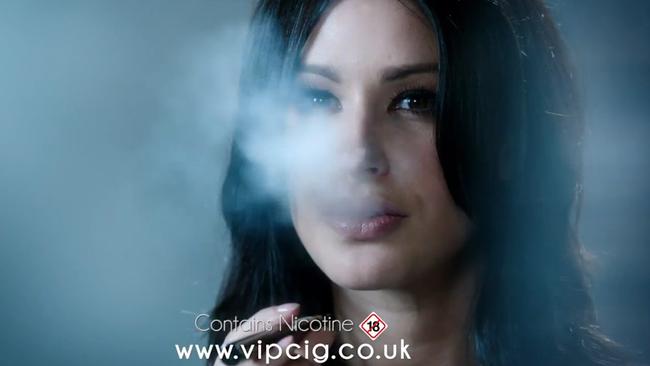E-cigarette brand causes controversy over ‘smoking’ ad
THE old days of the puffing camel and the Marlboro man could soon be back. The first TV ad to depict smoking in nearly 50 years has just gone to air in the UK.

Media
Don't miss out on the headlines from Media. Followed categories will be added to My News.
THE old days of the puffing camel and the Marlboro man could soon be back. The first TV ad to depict smoking in nearly 50 years has just gone to air in the UK.
UK TV network ITV has caused a storm of controversy this week by airing an ad for e-cigarette brand VIP, which features a woman seductively inhaling nicotine vapour, or ‘vaping’.
While e-cigarettes have been allowed to advertise on British TV previously, until now they haven’t been able to show the devices in use.
The Advertising Standards Authority revealed new relaxed marketing rules for e-cigarettes last month which now allow ads to show vapour being inhaled and exhaled.
Dave Levin, co-founder of VIP, said in a statement: “This advert will mark the first time in almost 50 years that TV audiences see someone exhale what appears to be cigarette smoke in an advert — however, it is actually vapour from an e-cigarette that they will see.
“Vaping has never been shown on a TV advert in the UK before, so this is a first for the country and I’m sure it will be a real conversation starter.”
Smoking ads were banned in the UK in 1965.
But it’s unlikely the ad would be allowed to air in Australia.
In Australia, the Whitlam Government decided to phase out tobacco advertising in 1973. The ban came into effect in 1976.
Advertisers in this country adhere to a voluntary Code of Ethics.
While there are no specific regulations around e-cigarettes, anything which could be seen to glamorise smoking — even non-tobacco products — is against the rules.
Advertising Standards Bureau chief executive Fiona Jolly said even an ad for e-Shisha, which doesn’t contain tobacco, was found to be in breach.
“E-cigarettes are allowed to advertise here, but the Code of Ethics says you can’t depict things that are contrary to community standards, and glamorising smoking is against community standards,” she said.
“If the VIP ad were run in Australia and a complaint were made, the board would look at whether it was glamorising smoking. It would certainly generate some discussion.”
In 2010, the ASB upheld a complaint against a Nicabate ad which showed a kangaroo smoking as it could make smoking attractive to children, and similarly in 2007, an ad for Nicotinell patches was found to glamorise cigarettes.
The vaping commercial, which followed a much complained-about, sexually suggestive ad earlier this year, provoked a strong reaction on Twitter:
What a horrid #VIPCig advert. Let's hope it puts people off smoking in any shape or form.
— laura beales (@loggy01) November 10, 2014Think that VIP e-cigarette advert is just wrong in so many ways #VIPCig Shouldn't be allowed it makes addiction look sexy!
— Lisajane (@missljdavies) November 10, 2014Think that VIP e-cigarette advert is shocking #VIPCig Shouldn't be allowed even after 9pm 🙈
— Coral Hayward (@coralhayward) November 10, 2014The #VIPCig advert looks like an advert for a sex chat line on late night TV
— Andy Burgess (@AndyB_Techie) November 10, 2014@missljdavies Not just about giving up. This #VIPCig ad is aimed at folks who never smoked before.
— Steve (@SteveTrees) November 10, 2014Originally published as E-cigarette brand causes controversy over ‘smoking’ ad



